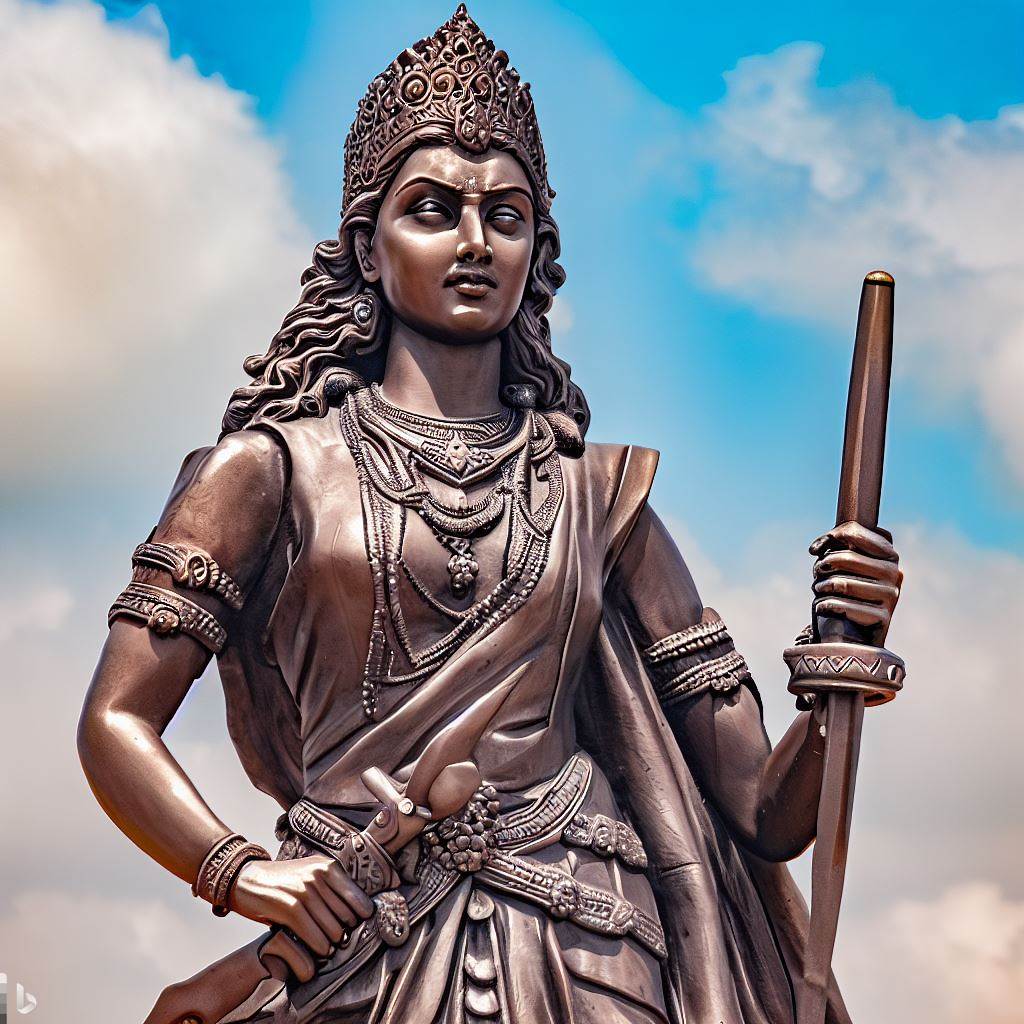Rani Mangammal – The Courageous Queen of Tamilnadu
Rani Mangammal
Mangammal was a famous queen who ruled the Madurai territory during the peak of 17 th century AD. His father was Tupakula Lingama Nayaka, the prime general of Madurai ruler Chokkanatha Nayak. When Rani Mangammal came to age, Chokkanatha Nayak married her, and she became the principal queen of Madurai. After the consequent events, Chokkanatha died in 1682, and Mangammal took over the crown. During her rule, she concentrated on laying the roads and avenues. They even built temples and choultries for poor people and devotional activities. Her military campaign skills were very admirable, as she showed in diplomatic summits. She ruled the Madhurai kingdom during 1689-1704 for 15 years with practical administration skills from the capital of Tiruchy.
Regency

Rani Mangammal’s son Rangakrishna Muthu Virappa Nayak came to the throne under his mother’s guidancether at fifteen. He was a brave warrior who defied the Mughal Emperor Aurangzeb and participated in various battlefields courageously. Unfortunately, he died in 1689 AD when his wife was pregnant. In these complicated situations, Rani Mangammal started to look after the kingdom. When the queen gave birth to a son, she committed Sati even though Mangammal opposed the orthodox custom. So Mangammal made her grandson Vijaya Ranga Chokkanatha the heir to the throne at only three months old. Since then, she had ruled Madhurai on behalf of her grandson till 1705 AD.
Military Campaigns
As a ruler, Mangammal faced threats from the neighbouring kingdoms usually. She never steps back to face the enemies in wars. As a woman ruler, she met the Marathas, Mughal Army with the Deccan Sultans and the Thanjavur Kingd with solid determination. Especially in the South, the Travancore Rajas defy Mangammal to pay tribute to the Madhurai Kingdom. However, Rani Mangammal solved all the complicated affairs with political wisdom and diplomatic skills. She never lost her temper in dangerous situations and strongly administrated the kingdom to strengthen at its peak.
She vigorously fought with Travancore Rajas, Raja Ravi Varma and Marathas. Even she didn’t hesitate to collaborate with a Mughal army to submerge a few regions in the Madhurai region. However, she had an intense blowout, and a significant loss happened in her last campaign in 1702. In 1702 she started a campaign against the Sethupathi and ended the war with defeat. During the war, Madurai’s famous Dalavoy Narasappaiah lost his life in the battle. This was a significant blow to Rani Mangammal, and she never did any campaign under her leadership.
Administration
Rani Mangammal was a good administrator; even today, we can see her development works like laying the roads and Choultries around Madhurai city. She concentrated on irrigation works to develop cultivation to avoid starvation.
Public Works

Her constructed irrigation channels were repaired and are still in force. The Cape Comorin highway was first built during her period, and now the road is well-known as Mangammal Salai. Still, the Choultries near present-day Madurai railway station are the standing monuments to recall her memories. She lived in Tamukkam Palace, which is now the place for Mahatma Gandhi Museum. The palace has Tamukku Maidanam, where elephant fights and other entertainments are performed to appease the royal families.
Religious affairs
Mangammal was a tolerant religious ruler. Although she belonged to the Hindu religion, she treated the other religious devotees equally. She encouraged to built the mosques and churches. The queen moved very friendly with all religious groups, even though she granted villages to a Dargah in Tiruchirapalli. She was Madurai’s devoteeMeenakshi Amman, donating precious gems, jewels and palanquins. She contributed a lot to building numerous temples in her kingdom. Rani Mangammal first celebrated the Unjal festival in Meenakshi temple during the Tamil month of Ani. During the festivities, all the royal families visit the temple and pay tribute to Meenakshi Amman. Even today, we can see her contemporary portrait in the Unjal Mandapam.
Death
still, her death is a mystery. When her grandson came to age, he stressed Mangamal to step down from the throne. But she didn’t obey his desire and wanted to rule for a few more years. Then, he and his general planned to dethrone her and succeeded. She was kept in prison, where she followed the starvation and lost her final breath in 1704. She was a famous queen and strongly influenced the Tamil people until today.
The story is very interesting as well as informative ..But the conclusion need much more convincing and authentic references and affirmations..
This Topic need more research attempts..Anyway appreciable attempt?
The History of the Great Queen “Rani mangammal ” deserves large appreciation and need to be written elaborately for the upcoming generation
Rani Mangammal’s story is very interesting but the end is not very convincing. The circumstances leading to her death may be researched and her biography may give a full account of her dethroning. Also, the story is full of grammatical mistakes. May I request the author to correct the errors.
Thank you for your valuable feedback, Sure we will try to improve the article.
Your suggestions are always welcome.
Interesting.